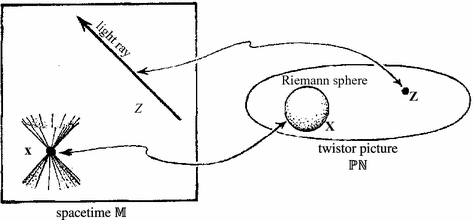This seems to be the month for string theory debates, with two a couple weeks ago in the UK involving Lee Smolin, and another featuring Lawrence Krauss and Brian Greene scheduled for next week in Washington D.C. The Washington Times has an article about this.
Smolin’s book has just appeared in the UK, and there have been lots of (very positive) reviews. See here, here, here, here, and here.
Besides talks (for a report on the one at Cambridge by a skeptical American physics student in England, see here), there were two debates. One featured Smolin, Philp Candelas, Simon Saunders and Frank Close and was held at Oxford; for a report, see here. It appears to have been a respectful and reasonable public airing of a few of the issues where string theorists and some of their critics disagree.
A couple days earlier though, a debate in London between Smolin and Mike Duff (also involving philospher Nancy Cartwright) had a very different nature. According to the report from one attendee, after Smolin started things out by arguing his case:
Smolin sat down. Duff stood up. It got nasty.
The trouble with physics, Duff began, is with people like Smolin…
Duff is described as “string theorist and man for whom, one imagines, the words ‘self’ and ‘doubt’ do not often rub shoulders”, and seemed to think it was a good idea to answer criticisms of string theory with vociferous ad hominem attacks. Lubos Motl and Clifford Johnson both found Duff’s behavior an excellent example for all string theorists, inspiring Clifford to write part VII of his extended attack on me, Smolin and our two books. He admitted somewhere around part V or VI that he actually hadn’t looked at the books and had no intention of doing so, and he’s pretty steadfast in that attitude. It never ceases to surprise me that people like Clifford don’t realize that, much as they may enjoy engaging in or listening to personal attacks on me and Smolin, this just doesn’t do a lot for the credibility of their field. String theorists often complain that Smolin portrays them as arrogantly dismissing any criticism, but they should realize that behavior like Duff’s doesn’t help them at all on this issue, quite the opposite.
Duff pretty obviously has a double standard for popular books about string theory. He’s quite capable of being polite, writing a very respectful review of Susskind’s The Cosmic Landscape for Physics World. His review of Smolin’s book in Nature Physics is something very different, much more like his performance at the debate. The review begins by misquoting Smolin, based upon something that was in the proof copy of the book he had (which the author hasn’t had a chance to look at), but was different in the published version. After the review, he had been informed about this, but still seemed to think it was a good idea to use this as ammunition in his personal attack on Smolin during the debate.
One of his main points was that it is ridiculous to claim that string theory has not made any progress since the 80s. Obviously there are some areas in which there has been progress in better understanding the theory, but, as far as the central issue, that of getting any predictions out of the idea of using strings to unify physics, it’s interesting to follow the link that someone with a waggish sense of humor at Nature put at the bottom of the page of Duff’s review. It’s a story from 1986 entitled Where Now With Superstrings?, and it reports on the views of string theorists at the time, roughly one year after the early developments that caused so much enthusiasm for string theory as a unified theory. The problem of too many vacua was something people were starting to worry about, but the feeling was that:
… another problem of non-uniqueness in superstring theory, the variety (thousands) of possible four-dimensional worlds it allows, is showing some signs of resolution.
The “progress” on this more than twenty years later is that instead of “thousands”, the number has moved up to the exponent, and we’ve now got the “Landscape” of 101000 or so possible four-dimensional worlds. Any “signs of resolution” of this are long vanished. Just as physicists are now waiting for the LHC next year, those of 1986 were waiting for the Tevatron to start up the next year, with Weinberg claiming that the mass range to be explored by the Tevatron was “a very plausible mass for them [superpartners] to have”. The reporter wrote that:
If the Tevatron sees no superparticles, supersymmetry will lose its value in the hierarchy problem, and hence half its motivation.
So, I guess Duff is right that it’s inaccurate to say that things haven’t changed with the prospects for string theory since 1986, since the situation now is a lot worse than it was then.
If you want to listen to the debate, audio is available on-line here, with a transcript to appear shortly. For another kind of audio showing what this is all about, see this posting from Sabine Hossenfelder.


